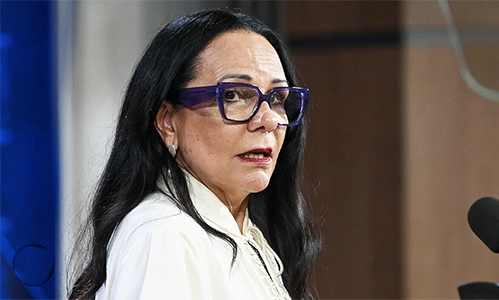
What is truth?’ – Pontius Pilate, John 18:38
by PAUL COLLITS – THOSE with long memories may recall Peter Costello dancing the macarena on the Kerri-Anne Kennerley show in 1996, several political generations and, seemingly, a lifetime ago.
Simpler times, in many ways. Now we are dancing with “the truth” – as in, dancing with truth-telling as the indigenous narrative in the context of the Voice debate.
- One might question whether “truth” and “Aboriginal activism” should ever be used in the same sentence.
- There’s no evidence Aboriginal communities developed any version of this Western evolution of truth.
- The absence of a written record of pre-European Aboriginal culture doesn’t help.
Here is a definition of Makarrata: “The Uluru Statement calls for a First Nations Voice to Parliament and a Makarrata Commission to supervise a process of agreement-making and truth-telling. These reforms are: Voice, Treaty, Truth. The first reform is the constitutional enshrinement of a Voice to Parliament.”
It seems that “truth”, or a conception of it, is at the heart of the Voice. We therefore owe it as Australians, who are about to be asked to change the Australian Constitution on the basis of (what turns out to be) an unexplained, scarcely thought through, heavily contested, philosophically thin notion of “truth”, to think this through a little more.
CONCEPTIONS
Is there a recognisably Aboriginal notion of “truth”, and how does it relate to traditional, Western conceptions?
According to Reconciliation Australia: “Historical acceptance is key to reconciliation in Australia. Historical acceptance means that Australians recognise, understand and accept the wrongs of the past and the impact of these wrongs on First Peoples … Historical acceptance cannot occur without truth-telling.”
But what is truth-telling?
Truth-telling can involve activities at local, State, national and international levels. For example: official apologies, truth and reconciliation or other inquiries and commissions, memorials, ceremonies and public art.
It can happen in community halls and churches; in museums, cultural or educational healing centres and institutions; local councils; and in schools, TAFEs and universities.
Local truth-telling is particularly powerful, especially when it occurs in small communities where people are able to develop personal relationships through the process, or build respect and understanding.
More and more local communities are working together to mark previously untold and unrecognised parts of their local histories.
This has resulted not only in an increase in researching and documenting of wars and massacres, but also in recognising Aboriginal and Torres Strait Islander sovereignty, contributions, and resilience, and actively recognising redress and healing.
The renaming of places has also grown as a means of truth-telling; museums and cultural centres are thinking about how to better take account of our shared Australian history.
According to two University of Melbourne academics: “First Nations people have made a plea for ‘truth-telling’. By reckoning with its past, Australia can finally help improve our future.
“Broadly speaking, First Nations peoples seek truths that address three key themes: narrative and memory; trauma and healing; and responsibility and justice.
Reckoning with its past? Is it simply a matter of everyone agreeing that “whitey did it”? Only accept the wrongs? And only accept that one view of “wrongs” is the only view?
The passage above doesn’t even begin to define what is meant by “truth”.
It simply provides examples of what is asserted to be truth-telling, and it assumes much.
Can we even agree on a common definition, when any alternate views of post-European settlement, other than that agreed by Uluru-driven Voice proponents, are dismissed (by academics) as the “colonisation of truth”?
This is lazy scholarship in service of ideology. Moreover, the use of terms such as “narrative” and “memory” invoke just one conception of “truth”, and a highly contested one at that.
Such words give the game away.
The evolving Western notion of truth has taken different forms down the years. There was the Judeo-Christian version, truth as revelation.
The enlightenment thinkers (like Descartes and Voltaire) thought they could jettison truth-as-revelation in favour of human reason and science-based truth.
It was still recognisably truth. It was objective truth. Then came the subjectivists and idealists and the idea that truth could only be known through the individual human mind, and wasn’t the expression of an objective universe outside the mind.
This all set the scene for the relativist revolution that came to fruition in the 1960s and convulsed society.
NARRATIVE
Your truth and my truth and all that. The truth as “narrative”. This is where we now are.
We are, as author Christopher Joliffe has noted, under the spell of: “The navel-gazing that characterised twentieth-century philosophy, especially that coming out of Europe, where everything once considered concrete was reduced to mere phenomenological experience with no noumena of its own.”
It is said that “truth” is the first casualty of war. Well, it has certainly been the main casualty of the post-modernists’ war on everything that came before about 1970.
Drawing (irrelevantly) on Einstein’s theory of relativity, the post-modernists dispensed with both the idea of objective truth and the idea that “truth” could be discovered beyond an individual’s constructed “narrative”.
The recently emerged conception of Aboriginal truth-telling fits all-too-neatly into this latter day, inferior version of truth.
There is no evidence Aboriginal communities developed any version of this Western evolution of the notion of truth prior to European settlement of Australia.
Yet, truth-telling is at the centre of the Makarrata revolution about to be foist upon us all.
Which version of “truth” is it? The absence of a written record of pre-European era Aboriginal culture doesn’t help us.
So we are left with the likelihood that it is post-1970s indigenous reflection that lands us where we are, truth-wise.
A little like the 1980s Maori understanding of the “principles” of the Treaty of Waitangi, or, indeed, “the spirit of Vatican II”.
Where does Makarrata truth-telling come from, then?
US journalist Christopher Nance explores this problem: “Truth-telling. The use of this term has been copied mainly from various overseas bodies (such as South Africa’s Truth and Reconciliation Commission), but it is not really about people telling the truth; rather it is a term that has become politically weaponised, a means for berating white Australians.
“In the current discussion it entails non-indigenous people admitting the truth about our past, that the continent had been ‘invaded’ and colonised, and that the original inhabitants had been ill-treated.”
This all sounds like the post-modernist notion of truth-as-narrative. Not worth a pinch of salt, in other words.
This is the age of truth-as-power. The Aboriginal pro-Voice activists are seeking to ride the relativist version of truth wave to the beach.
APPROPRIATION
This isn’t very “traditional”, of course. It might be even be construed as cultural appropriation, in other words. Quelle horreur!
The “truth” of British colonial occupation of Terra Australis is highly contested. As, of course, are Aboriginal interpretations of British colonisation.
Australian historian Keith Windschuttle, for one, has written several volumes on the subject, notably his most recent, The Break-Up of Australia in the process finding a veritable swamp of mis- and dis-information.
Nance says: “The terms and phrases discussed here are just a few that are being repeated in public discussions. They have become accepted without question, and indeed there are many more such claims that need to be scrutinised, such as traditional wisdom, Aborigines as a maritime people, and the validity of oral history.
“These are important issues because increasingly indigenous groups are making allegations, some outrageous, that are supposedly based on historical truths.
“All of the claims are for land or money, and many are made without any evidence; however, challenges to these claims are swiftly suppressed, branded as racist.”
Not many observers have even bothered to explore what understandings of “truth” are in play here, in this contentious, post-Uluru debate. They should.
We are all now dancing the Makarrata. Given that “truth-telling” is at the heart of the enterprise, perhaps we all should, in preparation of the referendum vote, spend a little time looking at this.
It would be perhaps a supreme irony if select Aboriginal power brokers – for that is all they are – who do not speak for any particular tribe, let alone for all indigenous people (including the tens of thousands who seem not necessarily indigenous at all), had culturally appropriated core elements of both the European enlightenment and the Judeo-Christian heritage — appropriated at least in form, if not in substance, for ideological purposes.
The word “truth” still has currency, meaning and power, they assume.
The core of the Uluru Statement’s compelling power is just such a “truth”
CON
This is a con, for at the heart of Uluru truth-telling is no notion of truth most of us would accept.
It is an act of appropriation of the truth label combined with a stripping out of its core. The appeal to some notion of truth is very convenient for the purposes of the Uluru class.
Consider the Enlightenment. That would be the same Enlightenment that, through colonialism, brought the whole science-reason-truth philosophy to what used to be called “the new world”.
A world that, whether or not it was “terra nullius”, seems certainly to have been philosophia nullius.
Even if the Enlightenment was the work of dead white men and was itself a racist, patriarchal, misogynist, homophobic construct, it still provides the core of modern understandings of the holy trinity of science-reason-truth so beloved (again, in form if not in substance) of the liberal elites who are driving the Voice.
And, seemingly, a reference point for the notion of the Makarrata on which Australians will vote very shortly.
Emeritus Fellow at St John’s College, Oxford University Peter Hacker notes, in relation to truth and the Enlightenment: “Journalists and politicians have introduced the expressions ‘post-truth world’ and ‘post-truth politics’.
“Some post-modernists have welcomed this new era. It will, they enthusiastically proclaim, put an end to the Enlightenment Project. This is correct.
“For the Enlightenment was committed to the pursuit of truth in the face of religious dogma and political bigotry. It advocated empirical science and its methods as opposed to religious judgments based on the Bible or on the authority of the church.
“It demanded reasons and rational justifications for social institutions inimical to human felicity. And it fought for freedom of speech and freedom of the press in the face of religious and political censorship.”
The juxtaposition of enlightenment truth and post-modernist truth outlined by Hacker is heavily ironic, given that the Makarrata version of truth bears so little resemblance to the former.
The version of “truth” that seems to be at the heart of Makarrata turns out to be faux truth, a construct largely of French café-dwelling philosophical ne’er-do-wells who thought that storming the barricades in 1968 ended every debate. Not very traditional Aboriginal.
So, it seems, the Voice industry has performed a (very clever) hostile takeover of whitey-philosophy, in the process upending traditional (either religious or not) conceptions of truth while at the same time appropriating truth’s marketing value.
Yes, it is fair question to ask what they mean by truth. What would Aboriginal Affairs Minister Linda Burney say “truth” is? Albo? Noel Pearson?
CONSTRUCTED
If all truth is constructed, well, why shouldn’t we question the Aboriginal industry’s notion of truth?
When, literally, some now say that “white can be black”. The era of Dark Emu. Of myth-making.
When, as per Australian academic Henry Reynolds, speaking in 1981: “… the prerequisite of Aboriginality is cultural loyalty and not any false nineteenth-century genetic theory.”
Sydney barrister Michael Connor succinctly called it out: “A magic moment, as the actuality of black people was Max Factored out of existence by a white academic…”
On the evidence of this, one might well question whether “truth” and “Aboriginal activism” should be used in the same sentence.
Despite the fact that the word gets thrown around a lot – and is used as cover for all sorts of woke enforcement practices, not least in the workplace.
IPA Director Bella d’Abrera tells us via The Spectator’s Café Culture that: “Last week it came to light that [the Australian Health Practitioner Regulatory Agency] has ordered psychologists to create ‘culturally safe’ practices by acknowledging ‘colonisation and systemic racism’, as well as pondering their own ‘individual racism biases’.”
More truth-telling? The enforcement of top-down PC totalitarianism is not even close to a simulacrum of truth, and not especially reconciliatory either.
DUNG
But this is the way of Makarrata: “truth’” as power. No doubt, practices like this are being rolled out all across the land. A veneer of truth lends weight to the cause, like sprinkling magic dust on a pile of dung.
Perhaps the real question is not about respective understandings of truth but whether truth is even the right word to be using.
Christopher Joliffe has called indigenous culture, for example, a “synthetic reinvention”. He refers to “… disingenuous sentiments about country or colonialism or culture or whatever magic word presently moves the withered heart of the patricidal activist …”
It is not accidental that Keith Windschuttle called his multi-volume history of post-European Australian settlement The Fabrication of Aboriginal History.
Not much truth on offer here, you might well think. And yet it is still maintained that truth is at the very heart of the Voice, and of the understanding of indigenous culture and history that we are now all meant to embrace.
It all has the whiff of a scam. They seem to just make stuff up, and then have the gall to call it “truth”.
The core of the Makarrata is an insult to any notion of truth, even the truth-as-narrative version of the French post-modernists.
Peter Costello, who danced the macarena all those decades ago, then, a few years later, proudly walked across the Sydney Harbour Bridge in support of “sorry”, might now be wondering where that all has led.PC


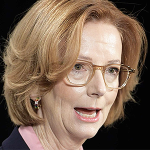
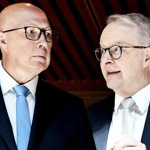
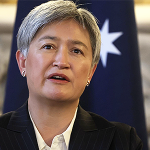
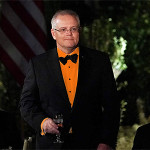
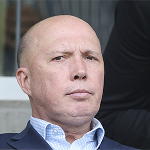

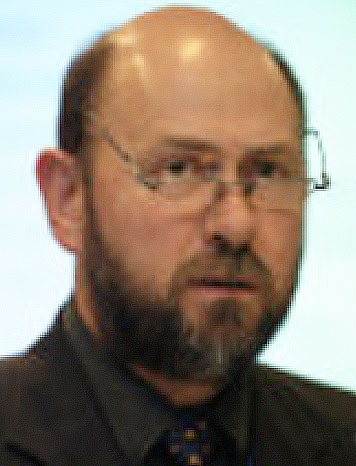

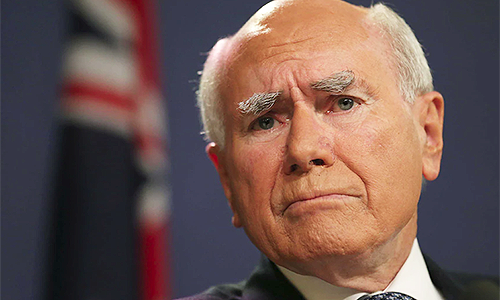
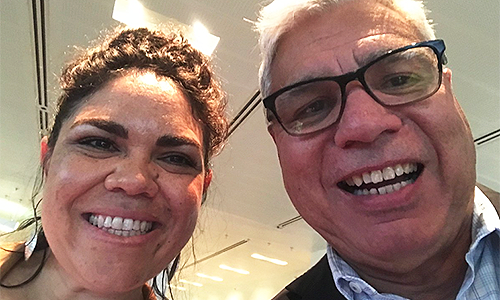
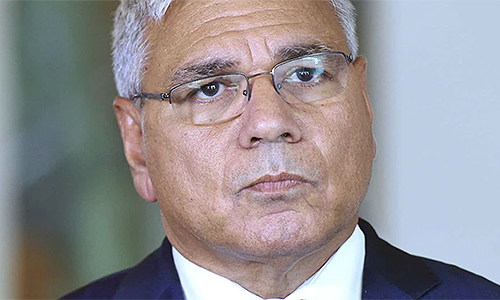
For Gods sake lets have this damn vote and then we can get on with life again… its like a permanent election campaign…
Support for Prime Minister Anthony Albanese and the Indigenous Voice to Parliament is falling even further, according to a new poll. New data from the Resolve Political Monitor shows the Coalition narrowing the primary vote gap with Labor to just four percentage points. The slump in support for Mr Albanese coincides with a further drop in support for the Voice to Parliament.
Sweet, good…..
It is interesting to consider the background history, obviously behind the now Voice agenda are Aboriginal activists, many are former university student activists and include what Uluru Statement and Yes23 committee member Thomas Mayo described as Communist Elders when he thanked them for their advice.
The activists have been working with the United Nations various octopus arm organisations including the United Nations Declaration on the Rights of Indigenous Peoples (UNDRIP).
Consider the Uluru Statement and UNDRIP, consent is required, the Uluru Statement also supports consent as a right but they have not implemented it. The 300-plus First Nations countries that have survived here. No “mob” can speak for any other mob according to cultural lore. Those people should have all been consulted and have consented to the Uluru Statement proceeding. It was adopted at a convention at a Yulara resort, 25 km from Uluru. Warren Mundine wrote: “I and others have spoken with Anangu elders angry it was named for their country, because it’s not their culture.
The convention was attended by 250 delegates, hand-picked from about a dozen community Dialogues (at which attendance was capped at 100, with 60 reserved for First Nations groups, and invitations only aimed to ensure consensus).
Makarratta is culture and language of thirteen Arnhem Land clans or mobs, it means Treaty and process.
Treaties between fellow Australians today based on people no longer living and from a very long time ago beginning in 1788? Reparations for the descendants from other descendants all of whom had no involvement? Sovereignty of our nation handed to Aboriginal activist politicians?
What a can of Witchetty Grubs.